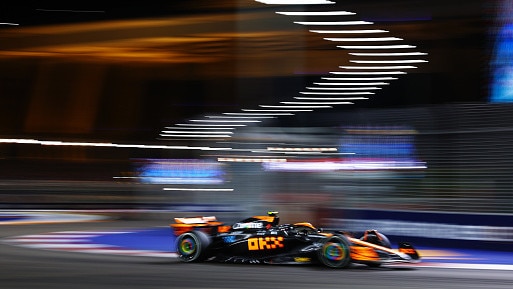Believe it or not, there are some fast cars I don’t want to drive
All men are self-deluding creatures who engender the phrase, ‘How hard can it be?’ But believe me, driving a Formula One car is something only the super human can do.

Believe it or not, there are some fast cars that I have no desire to drive. All men are self-deluding, overly confident creatures who engender the phrase, “How hard can it be?” But believe me, driving a Formula One car is something only the super human can do.
Which is why sitting opposite Lando Norris recently, his knees tucked up to his chest, grinning and child-like as he explained the gifts that make it possible to do what he does for McLaren’s F1 team, I couldn’t quite conceive that such a slip of a lad can master it.
But then I noticed his neck, so thick it makes his whole head look like a thumb, and the muscles of his arms and the annoying absence of any body fat, and remembered that you need to be a super athlete as well. In that weekend’s two-hour Singapore race I was told he would lose as much as seven per cent of his bodyweight in sweat.
Later that day I was allowed to hold his carbon fibre racing seat in my hands and I marvelled at the tiny, pencil-case-sized pouch of water stuck to the back, holding just 500ml (water is heavy, so that’s all he gets; every gram counts in F1) and sitting right in front of the engine, so it would be almost as hot as the hair-dryer air that rushes into his helmet if he cracks the visor (apparently F1 drivers sometimes do this in races at 330km/h to cool down).

A few years ago, in a feat of how-hard-can-it-be hubris, I agreed to take a ride in a two-seater F1 car in Melbourne. I had to hold down a “dead man’s handle”, basically a button, with my thumb, so that if I passed out from the G-forces the driver would get a warning light telling him to slow down, so I wouldn’t be injured. A few minutes later I was actually hoping to pass out because the struggle just to breathe, particularly in the long corners when it felt like a hippo was hip and shouldering my ribs, was so brutal. I tried to poke my helmet out into the wind at 300km/h-plus and nearly dislocated my brain. And none of that hurt as much as the braking, which felt like repeatedly being in a car accident.
A lot of people love Formula One as a sport, but a large percentage of them only began to do so a few years ago, thanks to the Netflix doco series Drive to Survive. I’m one of those nerds who people now suddenly find interesting at parties, even when I claim, grandiosely, to have been into it before it was cool.
I like to point out that a driver’s head weighs about as much as an eight-year-old child (or 25kg) when they pull 5G through a corner, that F1 cars can launch from zero to 200km/h in 4.5 seconds and that when drivers brake they can sometimes see the fluid being sucked out of their eyes and splashing into their visors.
A few years after my F1 ride – a day that ended with me laying under my desk six hours later, still unable to quell my nausea – I was offered the chance to fly to France and drive one for myself. I knew I was not a good enough driver to go fast enough to put heat in the tyres, and thus I would spin and embarrass myself, nor would I have the balls to brake heavily enough to get the carbon fibre discs and pads up to temperature, so I would crash. Swallowing my male pride like a snake eating a goat, I sent a more capable journalist and rallying enthusiast. He spun the F1 car anyway.
What I’m trying to say is that I am in deep awe of F1 drivers, and I think everyone should be. Hence my excitement at meeting Lando Norris, and discussing how poorly I’d handled F1 G-forces. He said the trick was that “you have to be strong enough to stay relaxed and yet still resist the Gs”, making that sound easy.
“But generally it’s more mentally draining than physical… Formula One is extremely physical on the neck, but it’s the mental part that makes you feel exhausted, because of the amount of concentration needed, because even just the slightest misjudgment or error and you can be having such a big crash.”
Aside from that, the 23-year-old Norris – who admitted that even he found an F1 car “too quick” the first time he tried it – likes to use a little trick called seeing into the future. “You get used to what I’d call the ‘guesswork’ of Formula One, so as soon as something happens, you almost know what’s going to happen next – we’re almost ahead of time,” he explained, seeming slightly mystified by his own super powers. “We’re thinking ahead, rather than ever reacting at the time.”
If you aren’t thinking ahead at F1 speeds, he says, “by the time you react it’s too late, especially in a street circuit. You go to Monaco, the refresh rate needs to be at 1000, because anything less than that it all just happens too quickly. To hit an apex in Monaco, or here in Singapore, you just turn in and you hope for the best.”
Awe. Shucks. I’m telling you, those F1 drivers are super human. Or possibly Jedi…




To join the conversation, please log in. Don't have an account? Register
Join the conversation, you are commenting as Logout